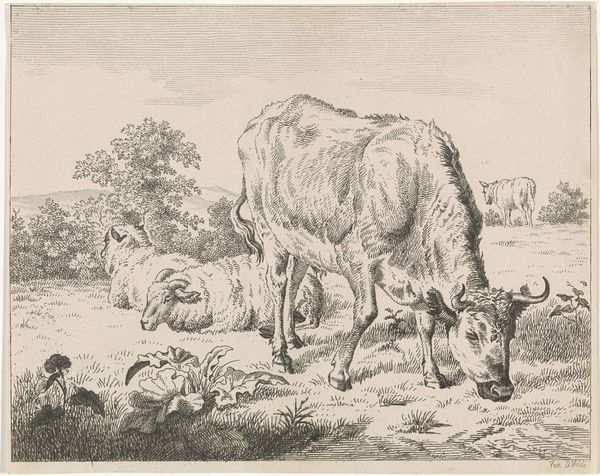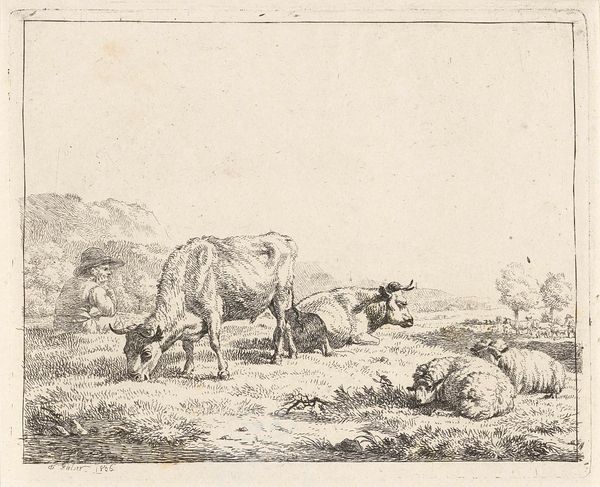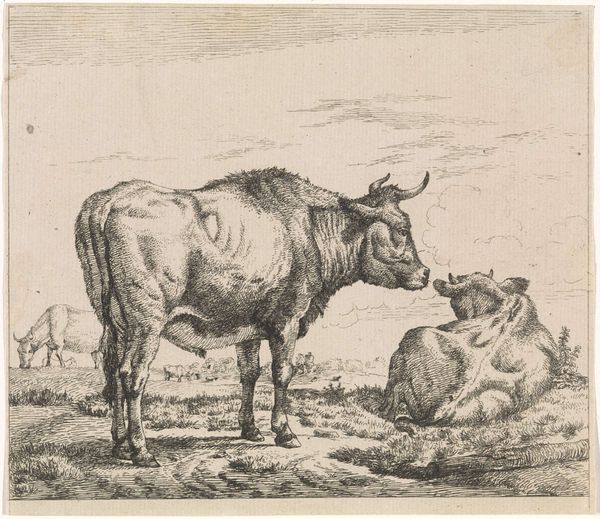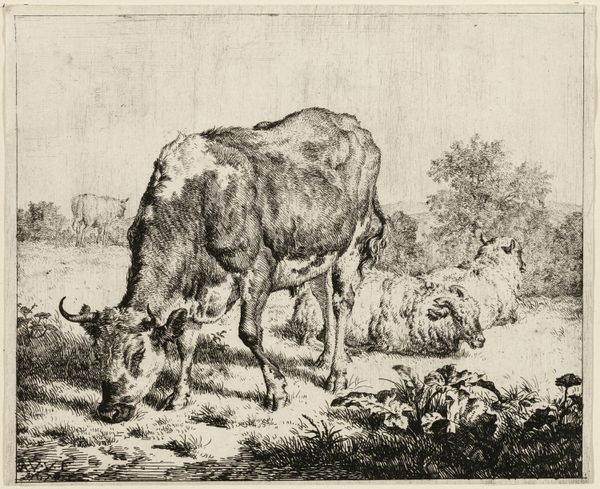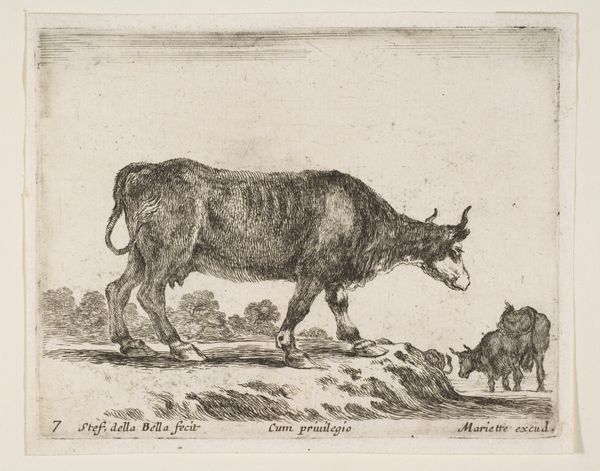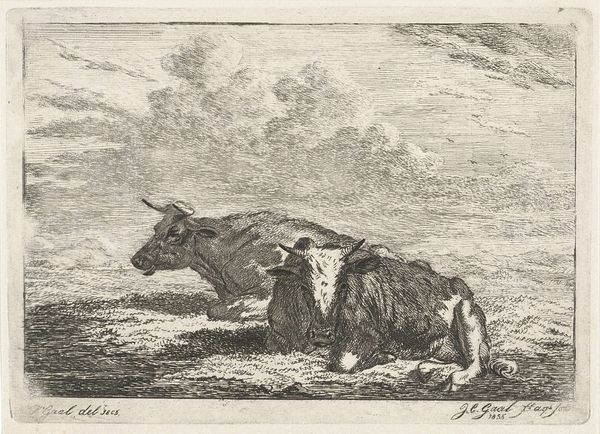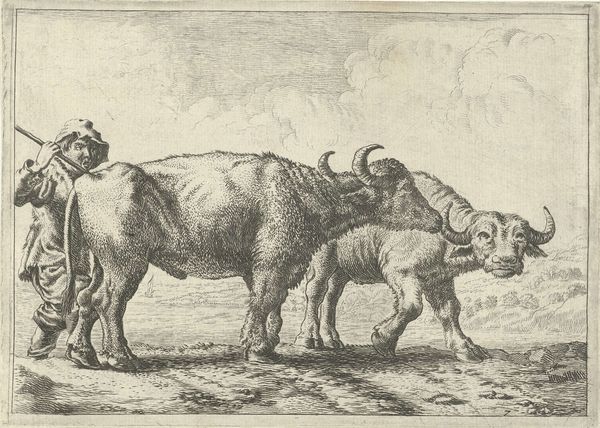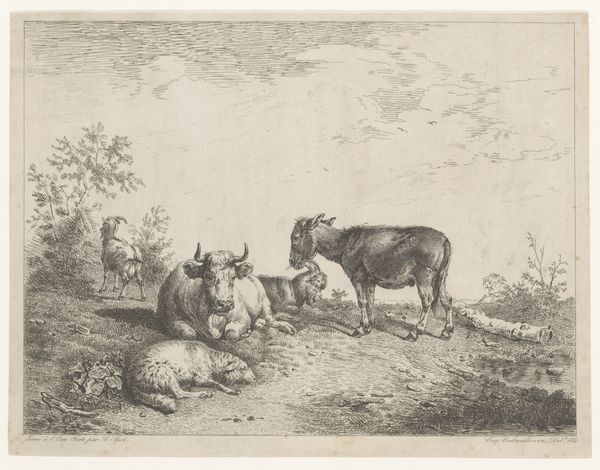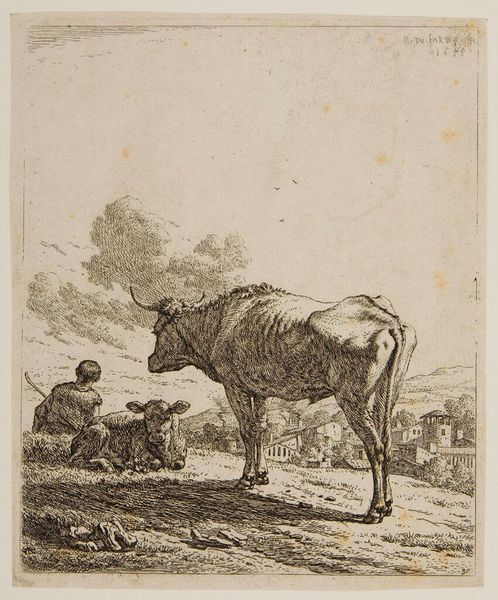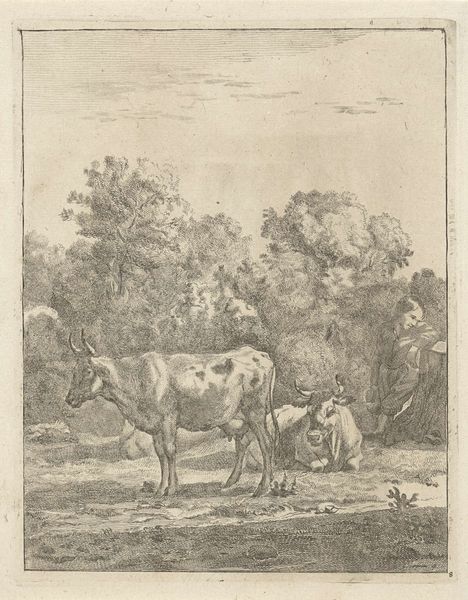
print, etching
# print
#
etching
#
landscape
#
genre-painting
#
realism
Dimensions: height 148 mm, width 215 mm
Copyright: Rijks Museum: Open Domain
Frédéric Théodore Faber created this landscape with cows and sheep sometime before 1844. He made it using etching, a printmaking technique. This serene scene of grazing livestock evokes a sense of rural tranquility, a theme that resonated deeply in the Netherlands during the early 19th century. This was a period marked by significant social and political change, including the Napoleonic wars. The art market and artistic patronage shifted, with the rise of a wealthy middle class who favored scenes of everyday life. Faber's etching catered to this taste, portraying an idealized vision of the countryside, untouched by urban industrialization. The presence of a herdsman adds to the pastoral narrative, reminding us of the traditional agricultural practices that were central to Dutch identity. Understanding this etching requires research into the economic and social history of the Netherlands at this time. This will give us more understanding of the image and its original meaning.
Comments
No comments
Be the first to comment and join the conversation on the ultimate creative platform.
